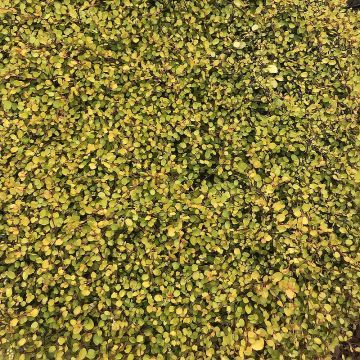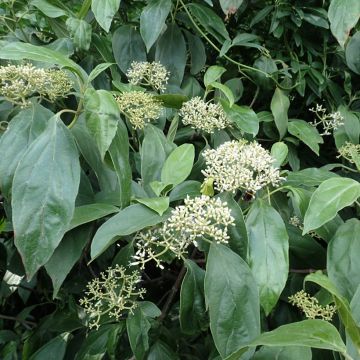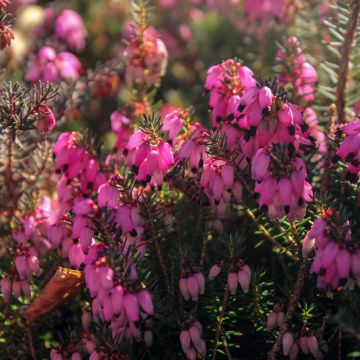

Mahonia bealei


Mahonia bealei
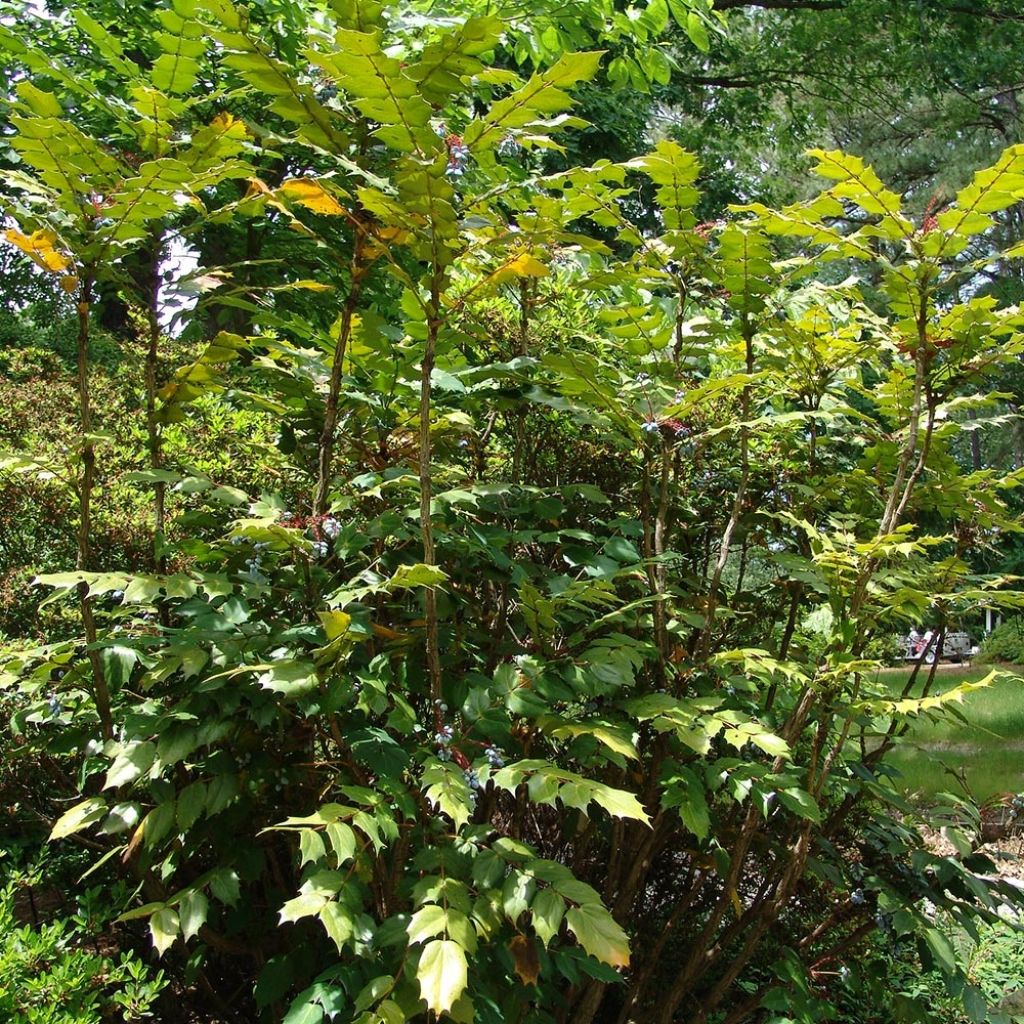

Mahonia bealei
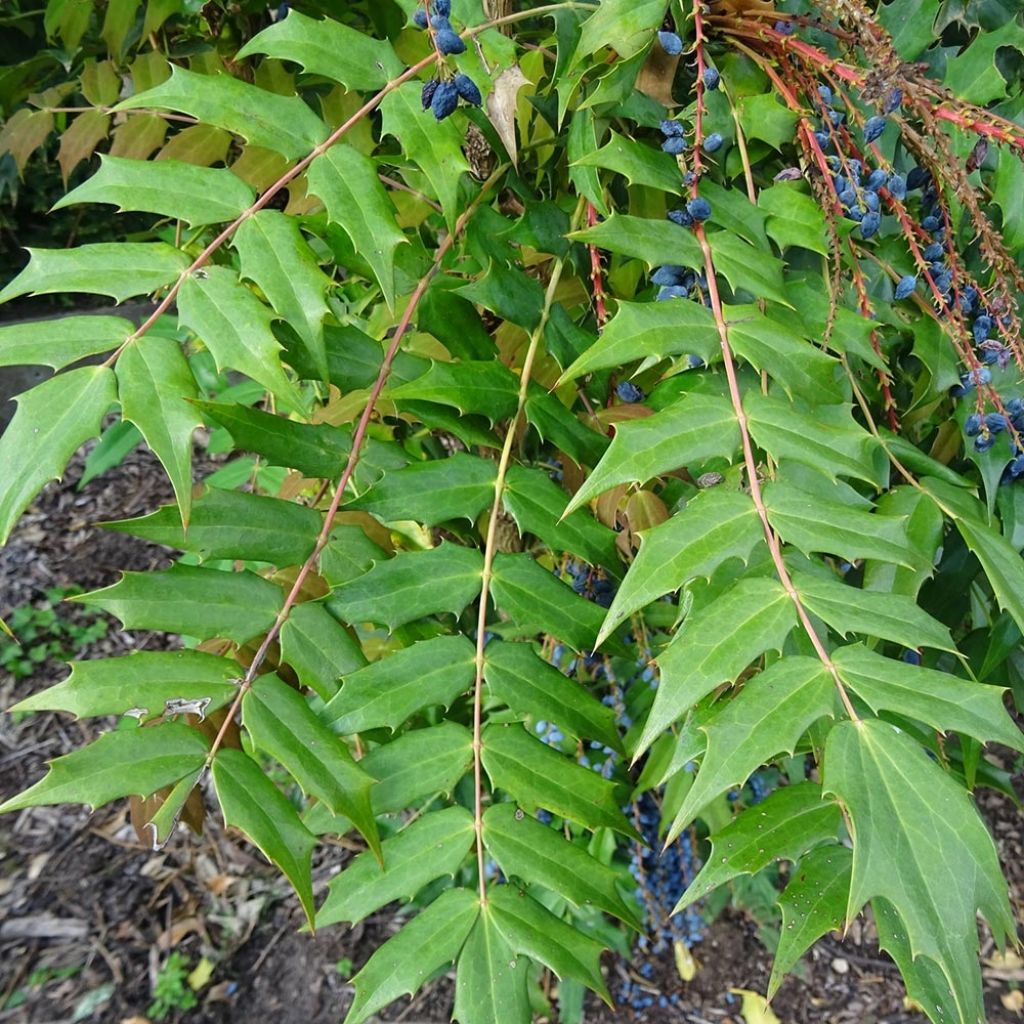

Mahonia bealei
Mahonia bealei
Mahonia bealei
Beal's Mahonia
This item cannot be shipped to the selected country
Delivery charge from €5.90
Delivery charge from €5.90
More information
Schedule delivery date,
and select date in basket
This plant carries a 24 months recovery warranty
More information
We guarantee the quality of our plants for a full growing cycle, and will replace at our expense any plant that fails to recover under normal climatic and planting conditions.
From €5.90 for pickup delivery and €6.90 for home delivery
Express home delivery from €8.90.
From €5.90 for pickup delivery and €6.90 for home delivery
Express home delivery from €8.90.

Does this plant fit my garden?
Set up your Plantfit profile →
Description
The Mahonia bealei is a hardy evergreen bush that is easy to grow, valued for its unique silhouette and its flowering with short inflorescences, upright clusters of lemon yellow flowers that are pleasantly scented. It has several slender and erect trunks, topped with large, shiny foliage that is tough and compound, with numerous toothed and spiny leaflets resembling holly leaves. Its flowers are followed by clusters of ovoid fruits, purplish blue with a whitish bloom, reflecting the light. With its exotic appearance, it is a compact bush with an architectural habit that should be showcased to create a colorful screen in all seasons, in the background of a shaded flower bed. Very adaptable, it is a bush that thrives in all but very dry soils and shady locations. It tolerates the sun better in soil that remains moist throughout the year.
The Mahonia bealei belongs to the Berberidaceae family. It is a very hardy species, native to China and has long been cultivated as an ornamental bush. It eventually forms a beautiful bush 3m (10ft) high and 2m (7ft) wide, with an initially upright habit that spreads. Its growth is quite slow, making it a bush of reasonable size, not invasive and well-behaved. Growing on multiple stems, this Mahonia has a weakly spreading erect habit supported by sparse branches. The evergreen foliage is composed of long leaves arranged in rosettes on the stems. Reaching a length of 35 to 45 cm (14 to 18 in), they are divided into 10 to 19 leaflets arranged in an opposite manner along the central vein, on an almost horizontal plane. Each leaflet, lanceolate in shape, has a tough texture and a spiny and undulate margin. The color of the young foliage is a strong glaucous green. The long-lasting flowering occurs in the heart of winter, from December to February, at a time when few other plants are attractive. The inflorescences are upright to slightly arching, arranged in rosettes at the tips of the young stems. These clusters, measuring up to 10 cm (4 in), are composed of numerous small campanulate flowers with lemon yellow color, fragrant and nectar-rich which contrasts nicely with the bluish color of the leaves. Their scent is somewhat reminiscent of lily of the valley, but lighter. They give way to small purplish blue berries covered with a whitish bloom, decorative and mildly toxic to humans, but highly appreciated by birds.
Flowering in the heart of winter, with numerous upright and then arching yellow panicles, the Mahonia bealei becomes the focal point in the garden when other plants are dormant. It can replace, on a smaller scale, the southern mimosa for gardeners in cold regions, both in the garden and in bouquets. Its original and highly structured habit will transform a flower bed or a large shaded rockery. For example, plant with ferns and the blue flowers of liverworts or wood hyacinths in cool and shaded areas. To hide the somewhat bare base of the bush, consider perennial geraniums, autumn daisies, or shrubby germander (Teucrium chamaedrys), which is evergreen and not demanding. A group of 3 plants placed in a triangle will create a quite spectacular display. If placed at the corner of a terrace or porch, it will perfume the air and bring color close to the house during the dreary days of winter. Gardeners without a garden can plant it in a large container on the terrace or balcony, paired for example with dwarf bamboos. This Mahonia can also be part of a mixed hedge, with other evergreen bushes or in a defensive hedge with barberries and eleagnus.
Report an error about the product description
Mahonia bealei in pictures








Plant habit
Flowering
Foliage
Botanical data
Mahonia
bealei
Berberidaceae
Beal's Mahonia
China
Other Mahonia
Planting and care
Plant the Mahonia bealei ideally in partial shade or shade (it can tolerate morning sun), in a deep and moist soil. It is very tolerant of the nature of the soil as long as it is well-drained. It can tolerate the presence of limestone and rocks in the soil. This mahonia is perfectly hardy up to -20 °C. In hot and dry regions during summer, it will adapt but will never reach the proportions observed in humid and cooler climates. It does not appreciate excessive water, especially combined with winter cold. Therefore, it requires good drainage: about twenty centimeters at the bottom of the planting hole. Add compost to the garden soil, and possibly a bit of coarse sand. Be aware that this bush has a rather imposing habit. Leave enough space for its growth and do not place it too close to a pathway to avoid its prickly foliage! To promote branching, it is essential to pinch the young shoots in spring during the first years.
Planting period
Intended location
Care
-
, onOrder confirmed
Reply from on Promesse de fleurs
Evergreen shrubs
Haven't found what you were looking for?
Hardiness is the lowest winter temperature a plant can endure without suffering serious damage or even dying. However, hardiness is affected by location (a sheltered area, such as a patio), protection (winter cover) and soil type (hardiness is improved by well-drained soil).

Photo Sharing Terms & Conditions
In order to encourage gardeners to interact and share their experiences, Promesse de fleurs offers various media enabling content to be uploaded onto its Site - in particular via the ‘Photo sharing’ module.
The User agrees to refrain from:
- Posting any content that is illegal, prejudicial, insulting, racist, inciteful to hatred, revisionist, contrary to public decency, that infringes on privacy or on the privacy rights of third parties, in particular the publicity rights of persons and goods, intellectual property rights, or the right to privacy.
- Submitting content on behalf of a third party;
- Impersonate the identity of a third party and/or publish any personal information about a third party;
In general, the User undertakes to refrain from any unethical behaviour.
All Content (in particular text, comments, files, images, photos, videos, creative works, etc.), which may be subject to property or intellectual property rights, image or other private rights, shall remain the property of the User, subject to the limited rights granted by the terms of the licence granted by Promesse de fleurs as stated below. Users are at liberty to publish or not to publish such Content on the Site, notably via the ‘Photo Sharing’ facility, and accept that this Content shall be made public and freely accessible, notably on the Internet.
Users further acknowledge, undertake to have ,and guarantee that they hold all necessary rights and permissions to publish such material on the Site, in particular with regard to the legislation in force pertaining to any privacy, property, intellectual property, image, or contractual rights, or rights of any other nature. By publishing such Content on the Site, Users acknowledge accepting full liability as publishers of the Content within the meaning of the law, and grant Promesse de fleurs, free of charge, an inclusive, worldwide licence for the said Content for the entire duration of its publication, including all reproduction, representation, up/downloading, displaying, performing, transmission, and storage rights.
Users also grant permission for their name to be linked to the Content and accept that this link may not always be made available.
By engaging in posting material, Users consent to their Content becoming automatically accessible on the Internet, in particular on other sites and/or blogs and/or web pages of the Promesse de fleurs site, including in particular social pages and the Promesse de fleurs catalogue.
Users may secure the removal of entrusted content free of charge by issuing a simple request via our contact form.
The flowering period indicated on our website applies to countries and regions located in USDA zone 8 (France, the United Kingdom, Ireland, the Netherlands, etc.)
It will vary according to where you live:
- In zones 9 to 10 (Italy, Spain, Greece, etc.), flowering will occur about 2 to 4 weeks earlier.
- In zones 6 to 7 (Germany, Poland, Slovenia, and lower mountainous regions), flowering will be delayed by 2 to 3 weeks.
- In zone 5 (Central Europe, Scandinavia), blooming will be delayed by 3 to 5 weeks.
In temperate climates, pruning of spring-flowering shrubs (forsythia, spireas, etc.) should be done just after flowering.
Pruning of summer-flowering shrubs (Indian Lilac, Perovskia, etc.) can be done in winter or spring.
In cold regions as well as with frost-sensitive plants, avoid pruning too early when severe frosts may still occur.
The planting period indicated on our website applies to countries and regions located in USDA zone 8 (France, United Kingdom, Ireland, Netherlands).
It will vary according to where you live:
- In Mediterranean zones (Marseille, Madrid, Milan, etc.), autumn and winter are the best planting periods.
- In continental zones (Strasbourg, Munich, Vienna, etc.), delay planting by 2 to 3 weeks in spring and bring it forward by 2 to 4 weeks in autumn.
- In mountainous regions (the Alps, Pyrenees, Carpathians, etc.), it is best to plant in late spring (May-June) or late summer (August-September).
The harvesting period indicated on our website applies to countries and regions in USDA zone 8 (France, England, Ireland, the Netherlands).
In colder areas (Scandinavia, Poland, Austria...) fruit and vegetable harvests are likely to be delayed by 3-4 weeks.
In warmer areas (Italy, Spain, Greece, etc.), harvesting will probably take place earlier, depending on weather conditions.
The sowing periods indicated on our website apply to countries and regions within USDA Zone 8 (France, UK, Ireland, Netherlands).
In colder areas (Scandinavia, Poland, Austria...), delay any outdoor sowing by 3-4 weeks, or sow under glass.
In warmer climes (Italy, Spain, Greece, etc.), bring outdoor sowing forward by a few weeks.












































